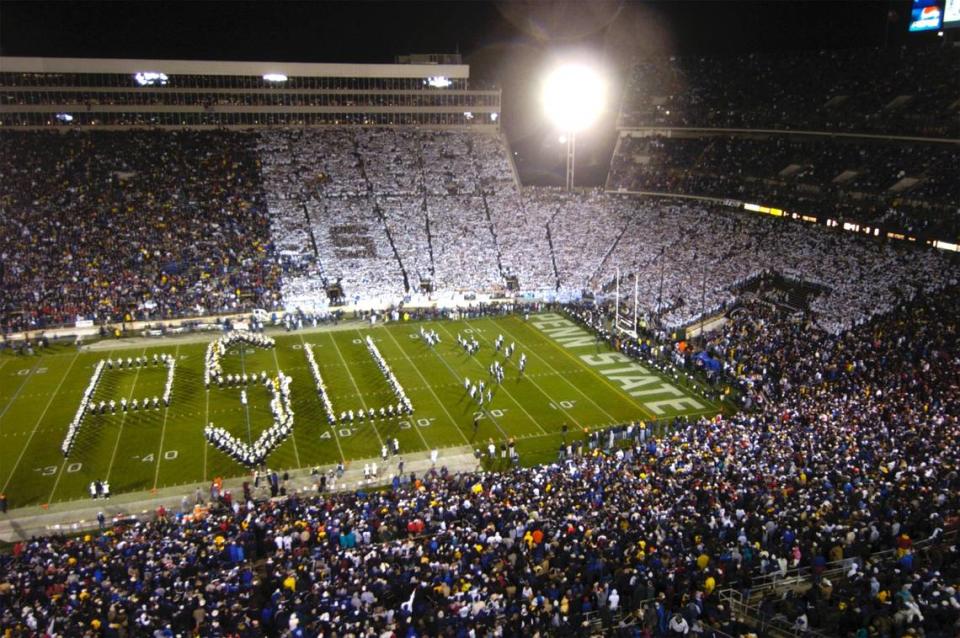What’s in a name? Penn State’s Beaver Stadium namesake left his mark on more than venue
In our Uniquely stories, CDT journalists celebrate what we love most about Centre County, its history & culture. Read more. Story idea? cdtnewstips@centredaily.com.
As thousands of people prepare to flood into Penn State’s Beaver Stadium for the Luke Combs concert on Saturday, many will likely not know the namesake behind the iconic venue.
Penn State football has come a long way since its very first games were held on the Old Main lawn. In 1893, the team moved off Old Main and onto Beaver Field, which was named for Pennsylvania governor and future Penn State president, James Beaver. The field, which stood near the current Osmond North Building, had a seating capacity of only 500, according to Penn State Athletics.
In 1909, the team moved from its original site to northeast of Rec Hall, where the Nittany Lion Inn and the Nittany Parking Deck sit today. The new site housed 1,000 spectators in the grandstands from Old Beaver Field and bleachers. The new field also housed space for tennis courts, a baseball diamond and a track. Over the decades the wood stands were replaced with steel and the seating capacity grew to hold 30,000 fans.
In November 1959, New Beaver Field was disassembled and moved to where Beaver Stadium now stands. On Jan. 30, 1960, the newly expanded athletic venue was renamed Beaver Stadium.
Penn State’s beloved stadium has gone through several renovations since 1960. With a seating capacity of 106,572, Beaver Stadium is the second largest stadium in the nation, only behind the University of Michigan’s Michigan Stadium.
In May 2023, the Penn State board of trustees approved the first phase of Beaver Stadium’s next renovation — a project that’s expected to cost $700 million and be completed by August 2027.
Who was James Beaver?
A Civil War officer, Bellefonte attorney and governor of Pennsylvania, James Beaver was not only a key part of state history but an early influential figure for Penn State.
Born Oct. 21, 1837, in Millerstown, Perry County, Beaver relocated to Bellefonte to practice law. Upon the outbreak of the Civil War, he became lieutenant colonel of Pennsylvania’s 45th Regiment and colonel of the 148th Regiment, Pennsylvania Volunteers.
During the war, Beaver was wounded four times, one of which led to a leg amputation. In 1864, President Abraham Lincoln appointed him as brigadier-general in recognition of his service.
Following the war, he returned to Bellefonte, where he joined Penn State’s board of trustees in 1873. In 1881, he was convinced, after several years of cajoling from the Republican Party, to run for governor. He lost to Democratic candidate Robert Pattison but ran again and won in 1886.
As governor, Beaver improved statewide infrastructure and education, as well as leading conservation movements for state forests.
In 1906, he became interim president of Penn State while serving his second term on the Superior Court of Pennsylvania. During his two years as president, he created the Student Board, the first official student government, according to the Centre County Historical Society.
He died on Jan. 31, 1914, and was buried in Union Cemetery in Bellefonte. For his contributions to Centre County and Penn State, Beaver Avenue, Beaver Hall and Beaver Stadium are named after him.


